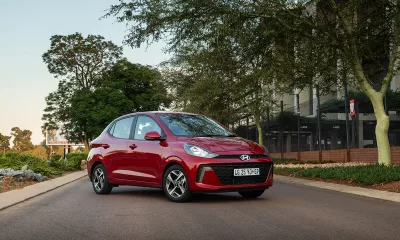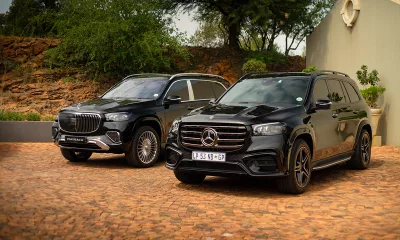Hyundai launched its 7th (global) generation of the Accent in the Cape wine region yesterday – normally a location reserved for more exotic machinery that carries a higher price tag than the humble Accent. Is it possible that style and glamour can be within reach of mere mortals?
The launch of the Accent follows hot on the heels of the all-new Elantra, with similar fluidic styling cues, flowing headlights, cut diamond shaped grill and coupe-like side profile. The Elantra is quite a looker and the smaller sibling does not disappoint in this area either.
The interior follows the same design language with the facia appearing elegant and uncluttered. Most of the soft touch materials on the Elantra’s facia have been replaced with hard plastic in the quest to make the car more affordable, though. The driver’s seating position is good but taller drivers might feel a bit cramped in the headroom department. The sloping rear roofline also compromises headroom for those in the rear but as the vehicle is aimed at young families this should not be a major issue.
The grey “luxury” cloth seats compliment the feeling of achievement but lumbar support on the front seats could have been better. The large boot should cope with all the shopping, prams or camping equipment the owner can throw at it.
Only one engine is currently on offer, the 1,6-litre in-line four petrol engine known by code name “Gamma”. This engine still makes use of multi-point fuel injection while other countries get the gasoline direct injection (GDI) version. Hyundai’s spokesperson said that they are considering this option for launch in the South African market in the next six months which should widen the powertrain gap to the competition even further.
The free-revving nature of the engine and gutsy performance were well received during our 170 km test drive. A slight booming noise made its way into the cabin at around 120 km/h which can make long distance cruising a bit tiring. Maybe a taller fifth gear ratio in the pleasant to use manual gearbox would have solved the problem?
The suspension provides a compliant ride over most road conditions. When pushing on a bit it was noted that the rear of the car became light during the combination of braking and turn-in, but this is excusable as racing surely was not one of the design criteria for this vehicle. Brake feel was on par with competitors in this segment while initial bite could have been better.
Where the Hyundai really outshines the competition in this market segment is the standard specification level included in the price. Other competitors might hide behind a low sticker price just to display the costly option list once in the showroom. To name a few standard features accompanying the Accent: Bluetooth, USB interface, steering wheel controls, ABS, EBD, air-conditioning… and the list continues. To clinch the deal there is a 5 year/90 000 km service plan in addition to the 5 year/150 000 km warranty. Maybe this explains why rental companies have bought into the Hyundai promise of a quality product with a large portion of vehicle sales going the rental route.
To answer the question in the opening paragraph – yes Hyundai has managed to bring style and specification to the masses in the form of the Accent. The Hyundai machine seems unstoppable…
Specifications:
Accent GLS Manual
Engine: 1,6 In-line Four
Power: 91 kW/6300 r/min
Torque: 156 N.m/4200 r/min
Fuel economy: 6,1 litres/100 km combined European cycle
Price:
1,6 GL Manual: R146 900
1,6 GLS Manual: R156 900
1,6 GLS Automatic: R167 900









